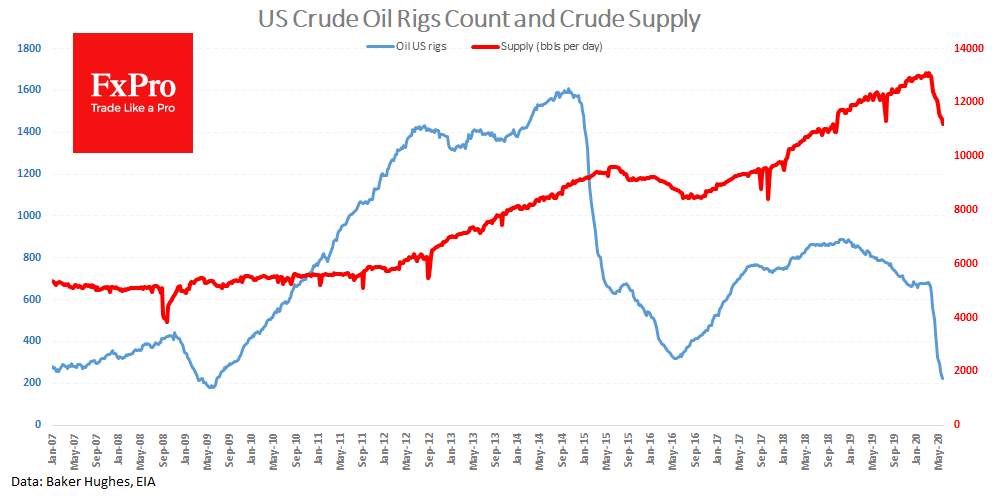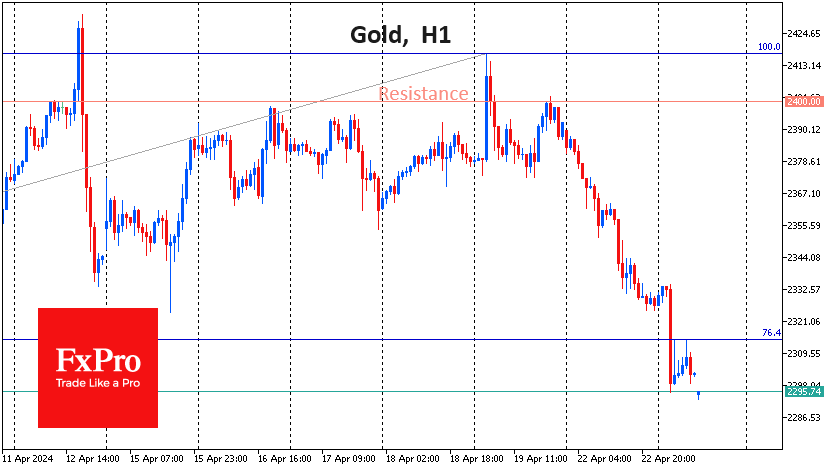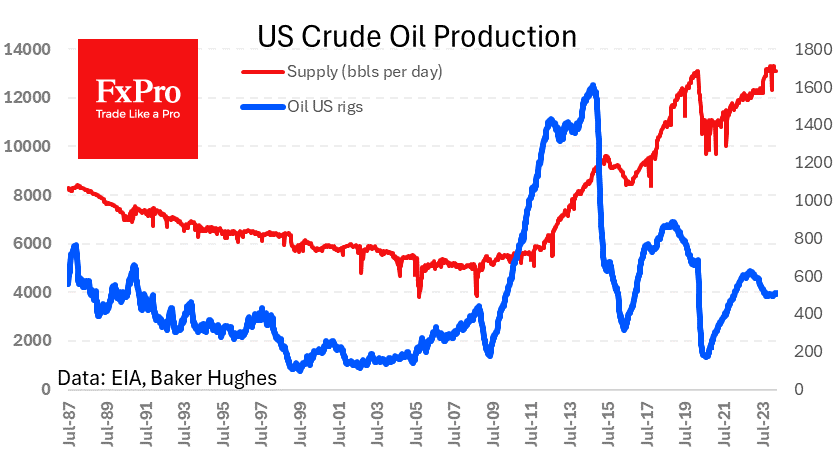Where’s oil going?
June 05, 2020 @ 11:13 +03:00
After a short stalling earlier this week, the oil managed to return to growth, once again overcoming the important round level of $40 per barrel of Brent. On a wave of optimism, Brent quotes may return to $45, offsetting the decline of the price during the wars between Russia and Saudi Arabia in March. However, further on, the overhang of huge reserves and economic contraction promise to become an insurmountable obstacle to the growth of prices.
Earlier this week, the oil price was under pressure because of hard negotiations within the OPEC+. However, this time Russia and Saudi Arabia were fierce supporters of meeting quotas and jointly promoted the idea of extending the period of lowest oil production by 1-2 months.

This is a 180-degree turnaround on how the two countries behaved in March when Russia refused to make new cuts, and Saudi Arabia announced that it would cut prices and maximize its production.
In addition to the unity of the two leaders of OPEC+, oil was also helped by the U.S. data. They showed a decline in drilling activity and a drop in production. American production continues to decline, dropping last week to 11.2 mln bpd, the lowest level since October 2018.

Equally important is that the number of working rigs in the U.S. continues to decline even after seven weeks of price increases. Despite reports that a significant part of U.S. production companies are already operating with profit at current prices, they are not in a hurry to increase production. Obviously, this is due to the fact that reserves are close to record levels.
Record reserves are also recorded in China. The country was in a hurry to buy oil on the backdrop of a price collapse, without paying attention to the decline in demand.
These excess reserves promise to restrain prices for a long time. At the same time, the chronic inability of OPEC+ to adhere to agreements cannot be discounted. Non-fulfilment of quotas by Iraq and Nigeria is not an exception, but practically a rule. As soon as the producers inside the cartel see the demand for their oil growing, they rush to increase its production, which undermines the faith in the cartel. In addition, one should not forget that at some point, as prices rise, American oil producers will also go on the offensive. At first, it may be an increase in drilling activity, followed by an increase in production after 1-2 quarters. And this promises to send an important signal to Saudi Arabia and Russia that it is time for them to also ease voluntary restrictions and put the issue of increased production back on the agenda.
The FxPro Analyst Team







